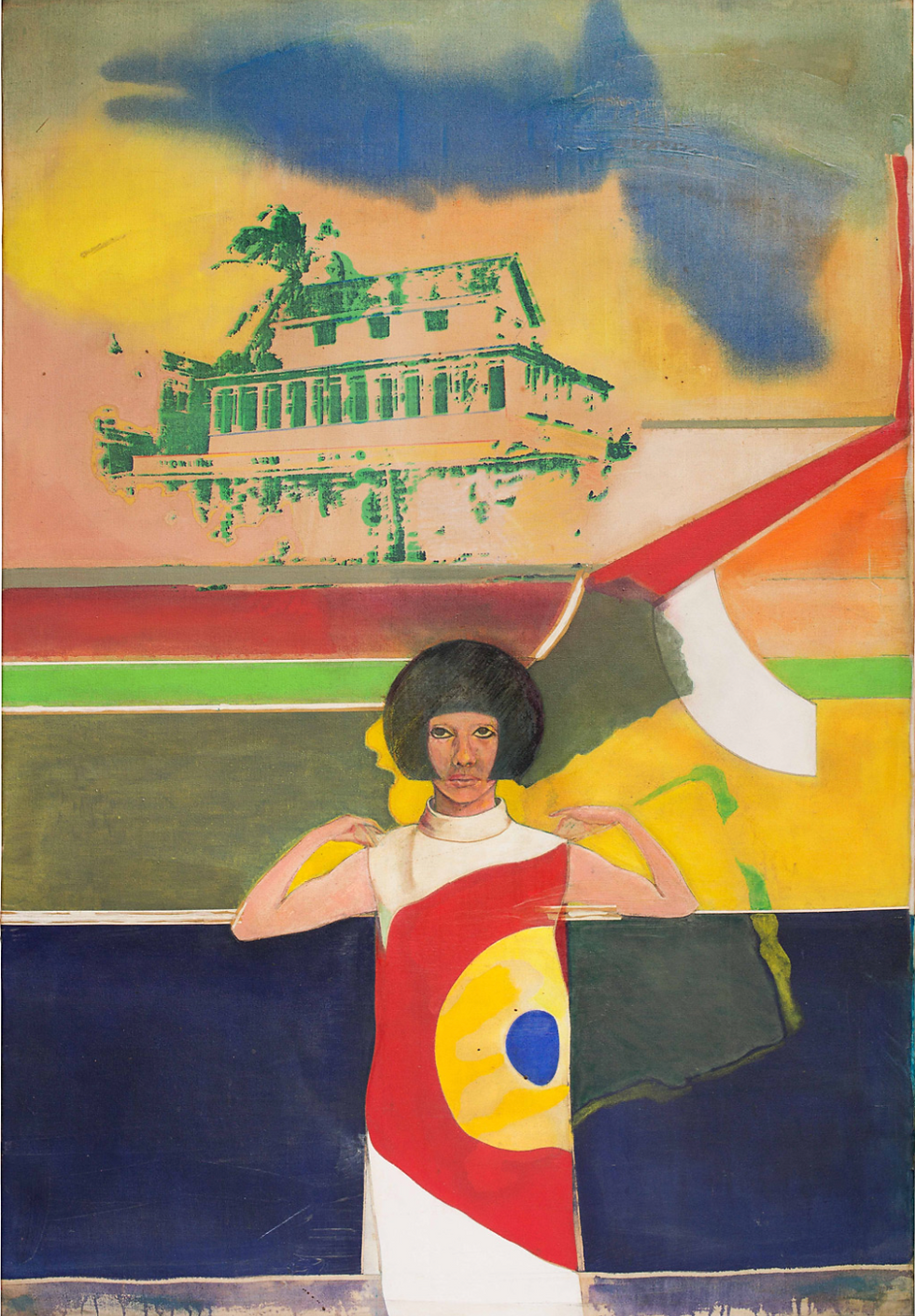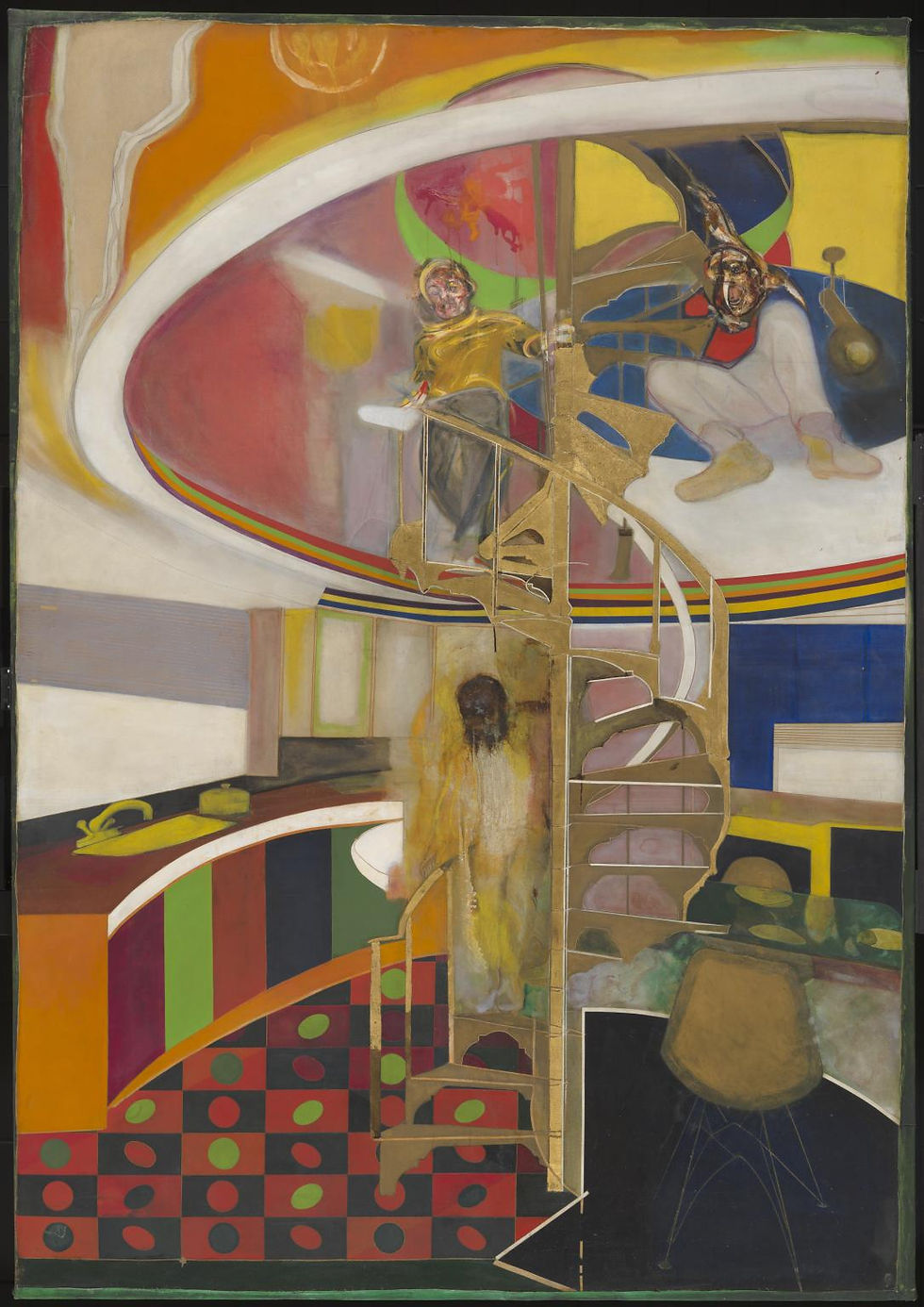Frank Bowling at Tate Britain: rediscovering a contemporary master
- Yoann Guez
- Jun 25, 2019
- 4 min read
Updated: Jun 26, 2019
The Guyana-born British artist Frank Bowling inaugurated his first major retrospective at Tate Britain to critical acclaim last month. This stunning show, which covers his six-decade long career through more than 70 paintings, is surprisingly overdue given the artist’s status as one of the greatest abstract painters of our time. Bowling’s late recognition, however, is not only due to the color of his skin; it also has to do with his deeply original style, which has always defied labels and trends.

After emigrating from Guyana at 19, Frank Bowling started studying at the prestigious London Royal Academy in the late 1950’s, where he met David Hockney, Patrick Caulfield and Derek Boshier. He first began his career as a figurative artist in the mid-1960’s and started working on paintings inspired by Francis Bacon and pop art.

These influences are very clear in his early works such as Cover Girl, which had never been exhibited before the retrospective. It shows the Japanese model Hiroko Matsumoto, who stands in the foreground of an abstract colored landscape where one can discern the shadow of Bowling’s native Guyanese house.
The nostalgic vibe which emanates from the painting is rooted in Bowling’s difficult early phase, as his works went largely unnoticed throughout the 1960’s.

Another masterpiece from this period, the stunning "Mirror" (1964-1966), conveys Bowling’s frustration towards his once stagnating career. Indeed, the artist painted himself twice: a first version of himself is standing with his heads in his hands at the bottom of a spiral staircase while the second one is climbing at the top of
stairs, thus symbolizing the free-spirited and successful artist he longed to be.
Discouraged by his lack of success in Europe, Bowling moved to New York in 1966, where he soon turned to abstraction, thus giving up his brushes to spill paint directly onto the canvas. While using this new technique in the early 1970’s, he accidentally created a shape that looked just like South Africa. He soon used this pattern to create his iconic "Mappa Mundi" series, where continents appear in the middle of vivid clouds of colors.

Frank Bowling used his new style to talk about burning subjects such as anti-colonialism or his Guyanese roots. His 1968 painting "Who’s Afraid of Barney Newman" is a tribute to his native country, whose official colors cover the shape of the South American continent.
This work, which belongs to the Tate Britain’s permanent collection, is exhibited alongside a more engaged painting called "Middle Passage", where the southern hemisphere of the globe is bathing in a painful ocean of red and orange, which symbolizes the horrors of the slave trade.
From the early 1980’s, Bowling started experimenting with chemical compounds like ammonia and every day objects, which he incorporated in his paintings to create new interesting textures. This allowed him to explore and perpetuate the legacy of European landscape painters such as James Turner or Claude Monet in a more abstract style.
Bowling’s "Great Thames" series is inspired by the reflection of light on the river, which he could see from his English studio in Pimlico after his return to London in the late 1970’s. Objects that can be found in this aquatic environment such as shells or bottles caps are also used within the painting to recreate the movements of water. Soft touches of gold, green and blue paint complement the composition of these works, which are reminiscent of Monet’s Water Lilies series.

Last but not least, some of the artist’s latest paintings, which combine all the innovative techniques he has used throughout his careers, are also exhibited in the last part of the show such as the gorgeous brightly-colored piece "Iona Miriam’s Christmas Visit to & from Brighton". This stunningly modern painting, in which we see a stripe of technicolor print in the middle of the composition, is the perfect exemple of Bowling’s mature period.

And yet, Bowling was neglected by both the institutions of the art world and the market for most of his career. Things only started to change in the early 2000’s, when some of his works were included in a group show during Venice Biennale in 2003. 2 years later, he became the first black British artist to be elected as a Royal Academician.
From the early 2010’s, Bowling’s paintings started to pique the interest of museums and galleries as the artist began to be represented by Hales Gallery and major institutions gradually acquired his works. In 2012, the American academic Courtney J. Martin organized a room of Bowling’s first abstract paintings from the 1970’s at the Tate Britain, 5 years before the famous Mappa Mundi exhibition at the Haus der Kunst in Munich, which was curated by the late African curator Okwui Enwezor in 2017.
However, Bowling was brought out of the shadow less than a year ago, when the announcement for his Tate retrospective was officially made. From then on, his works started appearing in major fairs around the world, which was not the case before.

Indeed, some of his paintings were presented for sale on the secondary and primary market under the $300,000 mark during recent events such as Art Basel in March and June, 2019. However, it is important for Bowling’s collectors to look for the right piece, as all of his paintings are not at the same æsthetic level.
As an art advisory firm, we have been interested in Frank Bowling for a while now, and our intuition on the artist was confirmed in 2018 with the Tate announcement. Since then, we have relentlessly recommended his works to our clients as we predicted the surge of his prices, which now seems to be finally happening.
Indeed, the British artist broke his auction record last week at Christie’s with the sale of an early painting for more than 10 times its low estimate at $872,510, which represents more than a five-fold increase compared to his previous record. And yet, there is every reason to think that a large-scale painting from his iconic "Mappa Mundi" series would go even higher in the 7-figure range if it was presented at auction; the future will tell.

コメント